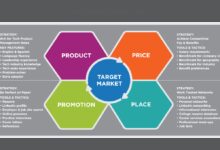Sales Zara: 7 Shocking Truths Behind the Fast Fashion Giant’s Success
Ever wondered how Sales Zara dominates the global fashion scene with lightning-fast trends and packed stores? It’s not just about cheap clothes—it’s a masterclass in retail strategy, supply chain genius, and consumer psychology.
Sales Zara: The Rise of a Fast Fashion Empire

Zara, a brand under the Inditex Group, has redefined how fashion reaches consumers. Unlike traditional retailers that plan collections months in advance, Zara thrives on agility, turning ideas into store-ready garments in as little as two weeks. This rapid response system is at the heart of sales Zara dominance in over 90 countries.
Founding and Early Growth of Zara
Founded in 1975 by Amancio Ortega in A Coruña, Spain, Zara began as a small store offering affordable versions of high-end fashion. Ortega’s vision was simple: deliver what customers want, when they want it. By controlling production in-house and focusing on real-time customer feedback, Zara quickly outpaced competitors.
- First Zara store opened in Spain in 1975.
- International expansion began in 1988 with Portugal.
- By 1990, Zara had stores across Europe and Latin America.
This aggressive yet calculated growth laid the foundation for Inditex to become the world’s largest fashion retailer.
The Business Model That Changed Retail
What sets sales Zara apart is its vertically integrated business model. Unlike most brands that outsource everything, Zara controls design, manufacturing, distribution, and retail. This allows for unprecedented speed and flexibility.
- Approximately 50% of Zara’s products are manufactured in Spain and nearby countries.
- Only 20% of designs are finalized before the season starts; the rest respond to real-time trends.
- New items arrive in stores twice a week, creating a sense of urgency.
“Zara doesn’t follow trends. It creates them by watching what people wear and reacting within days.” — Harvard Business Review
How Sales Zara Leverages Speed and Scarcity
The secret behind sales Zara isn’t just low prices—it’s the psychology of scarcity and speed. By producing limited quantities and rotating stock frequently, Zara creates a ‘now or never’ shopping experience.
The Psychology of Limited Stock
Zara intentionally avoids overstocking. This strategy reduces markdowns and increases perceived value. When customers see a jacket they like, they know it might not be there next week.
- Stores receive new items twice a week, keeping inventory fresh.
- Only 15–20% of items are repeated in production; the rest are one-time runs.
- This drives foot traffic and repeat visits, boosting overall sales Zara.
This model taps into the fear of missing out (FOMO), a powerful driver in consumer behavior.
From Sketch to Store: The 2-Week Miracle
While most brands take 6–9 months to bring a design to market, Zara does it in 10–15 days. This rapid turnaround is made possible by:
- In-house design teams working in real-time with store managers.
- Automated distribution centers that ship globally within 48 hours.
- Local manufacturing hubs in Spain, Morocco, and Turkey.
This agility allows sales Zara to capitalize on micro-trends spotted on social media or runways almost instantly.
Sales Zara and the Digital Transformation
As e-commerce reshapes retail, sales Zara has embraced digital innovation to stay ahead. The brand’s online presence now complements its physical stores, creating a seamless omnichannel experience.
Zara’s E-Commerce Strategy
Zara launched its online store in 2010, later than many competitors, but executed it with precision. Today, its website and app offer:
- Same-day delivery in major cities.
- Click-and-collect options from physical stores.
- Virtual try-ons and augmented reality features.
According to Statista, Zara’s online sales accounted for over 30% of total revenue in 2023, a figure that continues to grow.
Social Media and Influencer Marketing
Zara’s minimalist aesthetic resonates strongly on platforms like Instagram and TikTok. The brand collaborates with influencers and uses curated content to maintain a high-fashion image despite affordable pricing.
- Zara’s Instagram has over 40 million followers.
- They avoid loud advertising, relying instead on visual storytelling.
- User-generated content often mimics Zara’s campaigns, amplifying reach.
This digital word-of-mouth engine fuels sales Zara without heavy ad spending.
The Global Reach of Sales Zara
With over 2,000 stores in 96 markets, sales Zara is a truly global phenomenon. But expansion hasn’t been uniform—Zara adapts its strategy region by region.
Expansion in Europe and the Americas
Zara’s core markets remain Western Europe and North America, where brand recognition is strongest. In cities like Paris, New York, and Madrid, flagship stores serve as fashion landmarks.
- Stores in prime locations act as brand billboards.
- Localized collections reflect regional tastes (e.g., heavier coats in Canada).
- Strong logistics networks ensure fast restocking.
This regional customization enhances customer loyalty and drives consistent sales Zara growth.
Penetration in Asia and Emerging Markets
Asia represents both opportunity and challenge. While Zara has a strong presence in Japan, South Korea, and China, it faces stiff competition from local brands and e-commerce giants.
- In China, Zara partners with Alibaba for Tmall integration.
- Stores in India are smaller and more strategically located.
- Cultural sensitivity in marketing avoids missteps (e.g., modest fashion lines in the Middle East).
Despite setbacks—like temporary closures in China during the pandemic—Zara continues to invest in emerging markets for long-term sales Zara growth.
Sales Zara and Sustainability: A Contradiction?
As fast fashion faces scrutiny, sales Zara is under pressure to balance speed with sustainability. The brand has launched initiatives to improve its environmental and social impact.
Zara’s Join Life Campaign
Launched in 2016, the Join Life line features garments made from sustainable materials like organic cotton, recycled polyester, and TENCEL™.
- Items are labeled with a green tag to highlight eco-friendly production.
- Over 60% of Zara’s collections now use sustainable fabrics (as of 2023).
- The goal is 100% sustainable fabrics by 2025.
While progress is notable, critics argue that true sustainability requires slowing down production, not just greening it.
Criticism and Greenwashing Accusations
Environmental groups like Greenpeace have accused Zara of greenwashing—promoting eco-friendly lines while still producing massive volumes of clothing.
- Fast fashion contributes to 10% of global carbon emissions.
- Zara produces over 450 million garments annually.
- Only a fraction of these are part of the Join Life collection.
“You can’t be sustainable while producing at the speed and volume of Zara.” — Elizabeth Cline, author of ‘Overdressed’
Yet, Zara’s scale also means that even small changes can have large impacts, making its sustainability journey critical for the industry.
Innovation Behind Sales Zara’s Supply Chain
The backbone of sales Zara success is its world-class supply chain. Unlike competitors reliant on distant factories, Zara’s proximity-based manufacturing enables unmatched responsiveness.
Vertical Integration and In-House Production
Zara owns or controls much of its supply chain, from textile dyeing to garment assembly. This allows for:
- Real-time adjustments to designs based on customer feedback.
- Quick fixes for quality issues without third-party delays.
- Lower transportation costs and carbon footprint for European markets.
This level of control is rare in fashion and gives sales Zara a significant competitive edge.
Automated Distribution Centers
Zara’s main distribution hub in Arteixo, Spain, is a marvel of logistics. Spanning over 5 million square feet, it uses automated systems to sort and ship millions of garments weekly.
- Orders are processed within hours of being placed.
- Packages are routed to stores via air and ground freight.
- AI predicts demand and optimizes inventory levels.
This efficiency ensures that sales Zara stores are always stocked with the latest trends.
Sales Zara vs. Competitors: Who’s Winning?
In the fast fashion arena, Zara faces fierce competition from H&M, Uniqlo, Shein, and others. But sales Zara consistently outperforms many rivals in profitability and customer loyalty.
Zara vs. H&M: The Battle for Fast Fashion Supremacy
While H&M is larger in terms of store count, Zara generates higher sales per square foot. Key differences include:
- Zara invests more in in-house design and production.
- H&M relies more on outsourcing, leading to longer lead times.
- Zara’s stores are often in premium locations, enhancing brand image.
According to Retail Dive, Zara’s operating margin is nearly double that of H&M, highlighting its superior efficiency.
Shein’s Challenge: The Ultra-Fast Fashion Threat
Shein has disrupted the market with even faster turnaround times and lower prices. By leveraging AI and a vast network of Chinese suppliers, Shein can launch thousands of new styles weekly.
- Shein’s average price point is 30–50% lower than Zara’s.
- Shein’s digital-first model reduces overhead costs.
- Zara counters with better quality and in-store experience.
While Shein leads in volume, sales Zara maintains an edge in brand perception and retail execution.
The Future of Sales Zara: Trends and Predictions
As consumer behavior evolves, sales Zara must innovate to stay relevant. The brand is investing in technology, sustainability, and personalized shopping experiences.
AI and Data-Driven Fashion
Zara is increasingly using artificial intelligence to predict trends and optimize inventory. Store managers use handheld devices to report customer feedback, which is fed into central algorithms.
- AI analyzes sales data, social media, and weather patterns.
- Design teams receive real-time recommendations for new styles.
- Stock levels are adjusted automatically to prevent overproduction.
This data-centric approach ensures that sales Zara remains aligned with customer demand.
Personalization and Customer Experience
Zara is testing personalized shopping experiences through its app and in-store technology.
- Customers receive style recommendations based on past purchases.
- Smart mirrors in fitting rooms suggest complementary items.
- Loyalty programs offer exclusive previews and early access.
These innovations aim to deepen customer engagement and boost long-term sales Zara.
What is Sales Zara?
Sales Zara refers to the revenue and retail performance of Zara, the flagship brand of Inditex. It encompasses both physical and online sales, driven by fast fashion, limited stock, and global expansion.
How does Zara achieve such fast production?
Zara controls most of its supply chain, from design to distribution. By manufacturing close to its headquarters and using automated logistics, it can go from sketch to store in 10–15 days.
Is Zara sustainable?
Zara has launched eco-friendly initiatives like the Join Life collection and aims for 100% sustainable fabrics by 2025. However, its fast fashion model still raises environmental concerns.
Why are Zara clothes more expensive than H&M?
Zara uses higher-quality materials, better craftsmanship, and premium store locations. Its focus on speed and exclusivity also allows for slightly higher pricing.
Does Zara offer online sales globally?
Yes, Zara ships to over 200 countries through its e-commerce platform. It also partners with local platforms like Tmall in China to enhance online sales Zara.
Zara’s success in sales Zara is no accident. It’s the result of a meticulously engineered system that blends speed, scarcity, and style. From its vertically integrated supply chain to its digital-first customer engagement, Zara has mastered the art of fast fashion. While challenges like sustainability and competition from ultra-fast players like Shein loom large, Zara’s ability to adapt ensures it remains a dominant force. Whether you love it or critique it, one thing is clear: sales Zara will continue to shape the future of global fashion.
Further Reading:


